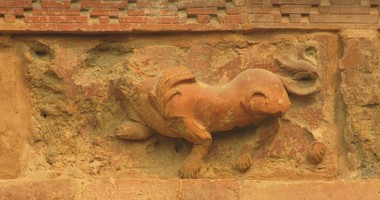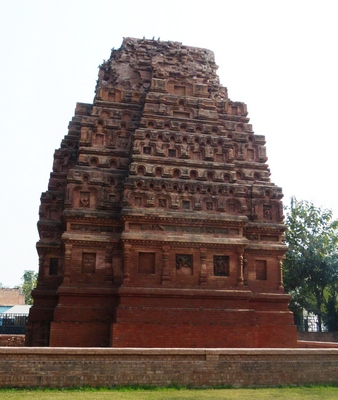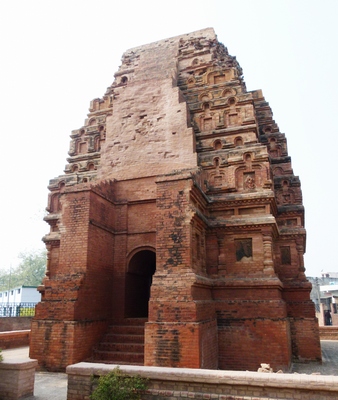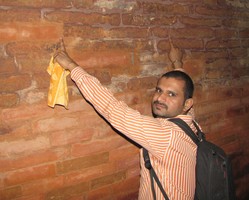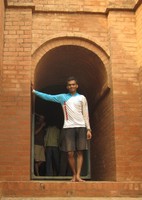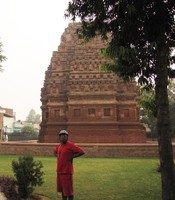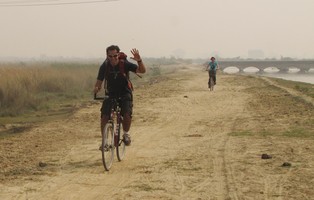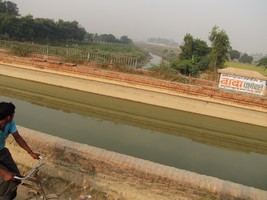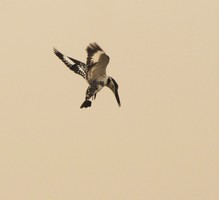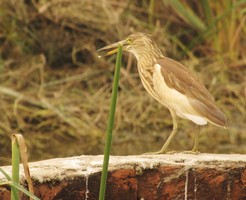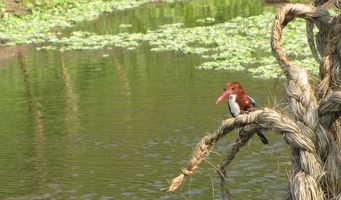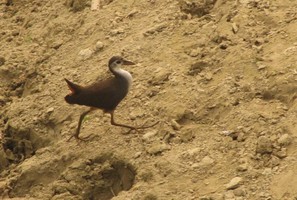the small non-descript village of bhitargaon, about 50km from kanpur, houses one of the oldest terracotta temples in India. it dates from the late gupta period, most likely shortly after kumaragupta ii (d. 455 CE). it was only in the middle of the 5th century that production of brick masonry in this magnitude became possible, and bhitargaon is the earliest instance of a significant temple structure made entirely of brick.
sixteen hundred years ago someone had moulded
a lump of wet clay
and fired this sculpture...
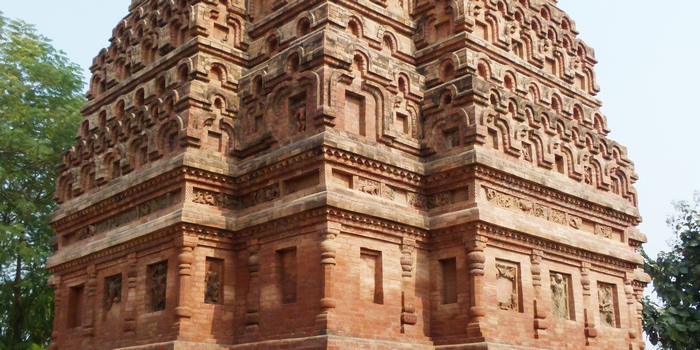
the main statuary are on the lower rows of the temple exterior; ; there are niches for holding 19 large (approx 1m tall), 29 medium and many more smaller and oblong terracotta sculptures, but all the upper rows, and the majority of the bottom rows as well, are empty.
bhitargaon temple
bhitar-gaon or inner village, refers to the inner part of what was at some point known as pushp-pur (flower-town); the outer area is called bari-gaon or outer village. today the temple stands in a small ASI compound, with people's houses and agricultural fields on all sides. that it has managed to survive for sixteen centuries within such dense human habitation is a testimony to the forbearance of the local population.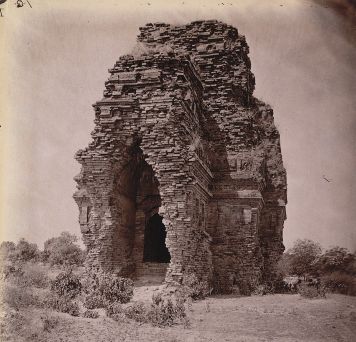
photograph from 1878 by joseph beglar (british museum). one can see the substantial entrance porch (ardha-manDapa), now simplified. most of the structure collapsed in 1894 after a lightning strike, and was re-constructed. there are many debates about the authenticity of much of the present structure.
the temple you see today is largely a reconstruction from the 1900s.
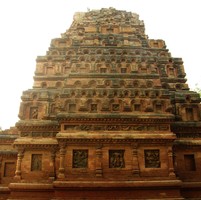
facade of temple, north face. a terracotta sculpture from the north facade; fish with what looks like an elephant head

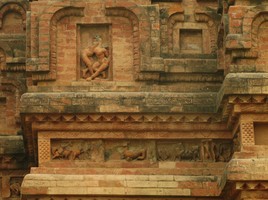
garuda or peacock. terracotta sculptures along the west facade
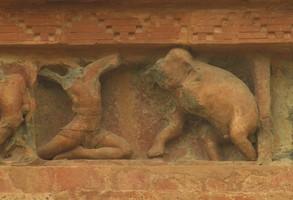
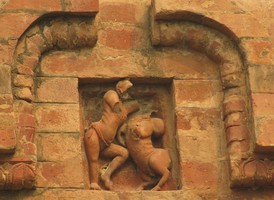
man fighting elephant maybe. krishNa killing an asura in the form of a bull (ariShTAsura)
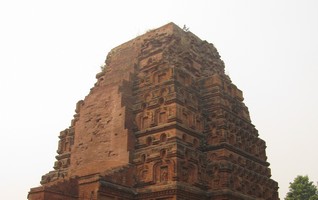
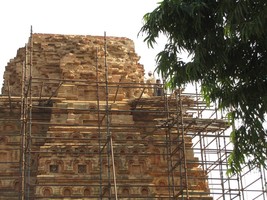
the upper part of the shikhara remains unkempt. bhitargaon repairs (image from 2010 nov). the last two years the monument was extensively maintained, but the upper part could not be done since there was no consensus on how it should look.
bumpy trail bicyclists ride to bhitargaon: 2011 nov
the 5th c. (gupta period) temple at bhitargaon was about 46km from iitk, so the total ride was close to a 100km ride. on the way, we would also visit the 19th c. aqueduct where the ganga canal is taken over the pandu river. when we announced it on the facebook page, we had expected a handful of people, but nearly a dozen turned up. this included four foreign students (valentin, arash, zoe, and ansha), all of whom were bicycling long distance for the first time. there were two newcomers who had ridden with the adventure club (saket, anoop), as well as five bumpy trailers (gaurav, adarsha, ravikiran, saumyen, amit). three of us had geared bikes, the rest were on normal everyday cycles. our start time was 05:30, when it is still dark. we were on the road by about 05:45. we took the gt road till Afim koThi (11km), and then turned right to catch the hamirpur highway to ramaipur (28km).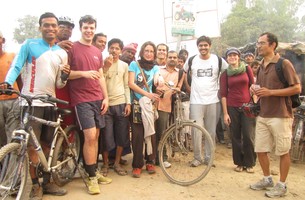
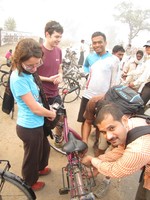
tea break at madhobag near ramaipur (07:45; 26km from iitk). saumyen and gaurav repairing ancha's bike; valentin, ravikiran.
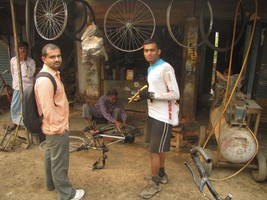
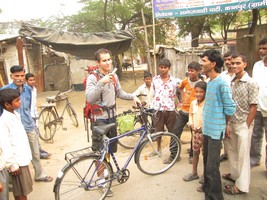
gaurav and ravikiran fixing a puncture and chain break at majhawan; arash's sugarcane chewing entertains the villagers.
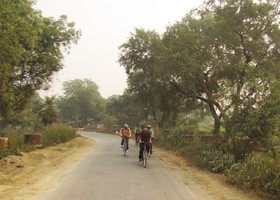
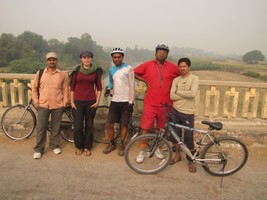
gaurav zoe gunale saket on road nearing Sarh... the rind river bridge near birsinghpur. 10:03
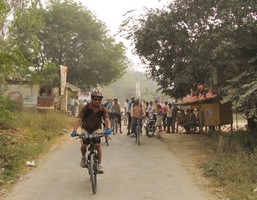
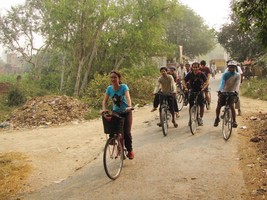
into the bhitargaon bypass : saumyen, and then ancha saket ashar gunale valentin zoe adarsha anoop
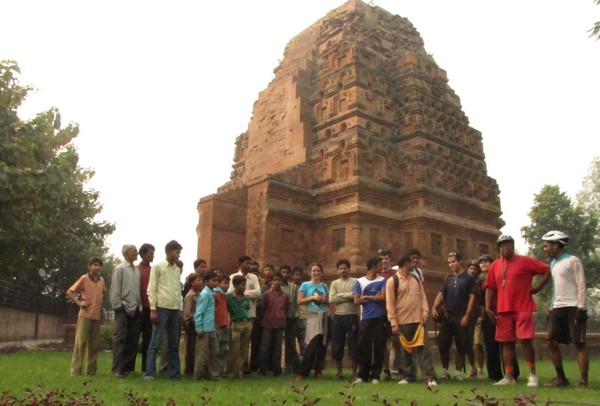
the group at bhitargaon. you can see the shortened entrance porch on the east facade.
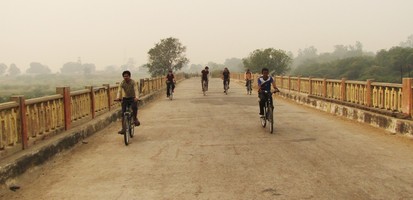
saket zoe valentin ashar gaurav anoop: at the rind river bridge (birsinghpur)
country roads to the aqueduct
after a watering break at bhitargaon, we re-traced our route to ramaipur, i wanted to explore the ravana statue at majhawan - i was intrigued when i saw it last year - it is not often that you find permanent statues to rAvaNa. as with last year, a crowd of kids were playing cricket in the field in front. the moment we approached the statue, the field emptied in a flash and everyone came over to see us. we then crossed the highway and took the route to kaindha, where we turned to the canal and went offroad along the kaccha (unpaved) path beside the water. a colony of lapwings were nesting along the bank of the canal.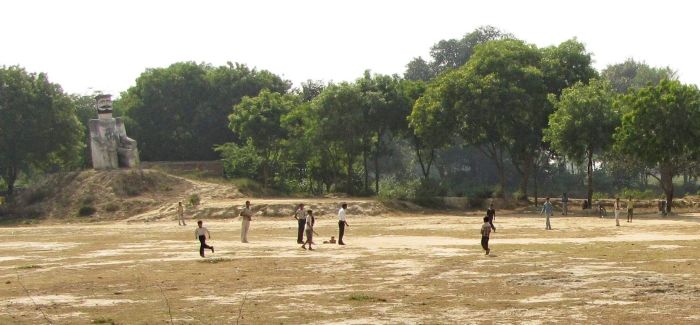
cricket under ravana's gaze at majhawan. it is interesting how the statue has only one head, unlike traditional representations of a ten-headed ravana. (this image from nov 2010).
offroad riding
along the canal bank
lined with birds...
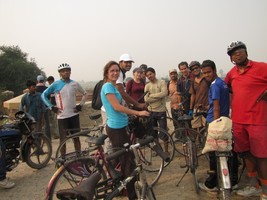
video: cows and little egrets at aqueduct. bumpy trailer group at aqueduct
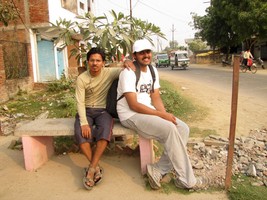
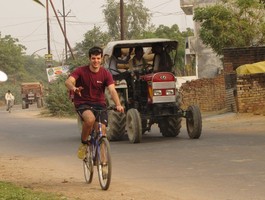
nearly done: saket adarsha on shiuli rd turn. valentin reaching the turning point
birds
the countryside all around kanpur is alive with birds...
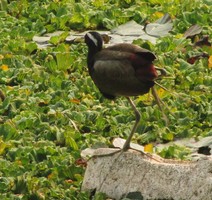
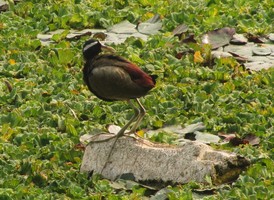
bronze winged jacana at pond between sain and kaindha
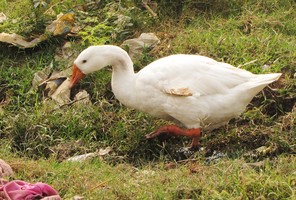
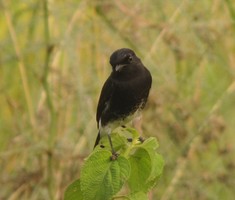
goose_sain village; pied bushchat beside the canal
route map
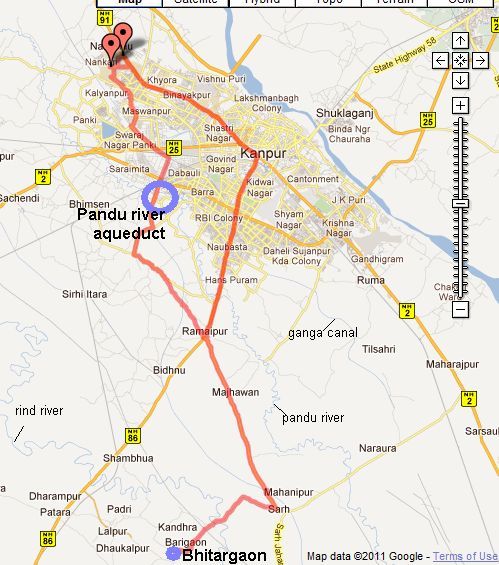
route map. click for kilometer markers and interactive route on gmap-pedometer (note: the map follows the route backwards)
alternate routes to bhitargaon: 2011 december
the town of sarh has a road going to chakeri. also, the approach to bhitargaon can be made more directly from the highway via a small canal a little past the rind river. joydeep and i explored this route in december 2011. i had just started using my new garmin edge, and here's a map of the route route we'd taken; click on the "+" and "-" to zoom and drag the mouse:The little detour you see near lalpur is a visit to a santra orchard owned by yogendra singh kushwaha, local BSP man and kanpur zilla panchayat member. his nephew, who was riding a motorcycle alongside us, invited us to check it out; they gave us more of the "kinnu" variety of tangerine than we could comfortably carry back!
for upcoming ride info, join our [facebook forum]
amit mukerjee Nov 7 2011, for the bumpy trail bicyclists. mukerjee [at] gmail
